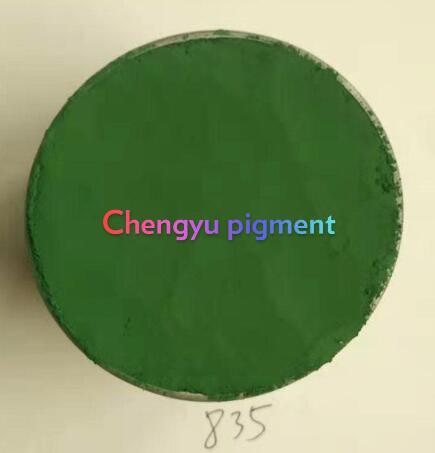Iron oxide pigments are widely used in various industries for their durability, color stability, and resistance to weathering. These pigments come in a variety of shades, including reds, yellows, blacks, and browns, making them versatile for applications like coatings, construction materials, plastics, and cosmetics. The process of producing iron oxide pigments involves several key steps that ensure consistent quality and performance. In this article, we will explore how iron oxide pigments are produced, focusing on the different methods and techniques involved.

The primary raw materials for producing iron oxide pigments are iron salts or ores. Common sources include ferrous sulfate, ferric chloride, or natural iron ores like hematite and magnetite. These materials are rich in iron, which forms the base for creating the pigments.
Additionally, the quality and purity of the raw materials are crucial as impurities can affect the color and consistency of the final product. For example, ferrous sulfate, a byproduct of the steel industry, is often used in the synthesis of synthetic iron oxide pigments, making it a cost-effective choice.
Synthetic Process: Precipitation Method
The precipitation method is one of the most common processes for producing synthetic iron oxide pigments. This method starts with an iron salt, such as ferrous sulfate, which is reacted with an alkali to form iron hydroxide. The key steps are:
1. Reaction: Ferrous sulfate is mixed with sodium hydroxide (alkali) to form iron hydroxide.
2. Oxidation: The iron hydroxide is then oxidized to create iron oxide. The specific conditions of the reaction—such as temperature, time, and concentration—determine the color and type of pigment produced. Red, yellow, and black iron oxides can be created by adjusting these factors.
3. Filtration: The resulting iron oxide is filtered to remove excess water and any impurities.
4. Drying: The pigment is dried to obtain the final product in powder form.
This method is popular because it allows for precise control over the pigment's color, particle size, and shape, resulting in consistent quality.
Synthetic Process: Calcination Method
The calcination method is another approach used to produce iron oxide pigments, particularly red pigments. This method involves heating iron salts at high temperatures to initiate thermal decomposition. The main steps include:
1. Raw Material Preparation: Ferric oxide or another iron compound is heated in a furnace at temperatures ranging from 600 to 1,000 degrees Celsius.
2. Thermal Decomposition: During the heating process, the iron compound decomposes into iron oxide. The temperature and duration of calcination determine the final color and particle size of the pigment.
3. Cooling and Grinding: The resulting pigment is cooled and then ground to achieve the desired particle size and texture.
Calcination is typically used to produce red iron oxide pigments, known for their deep, vivid color and high stability.
Natural Process: Extraction from Iron Ore
In addition to synthetic methods, iron oxide pigments can also be produced naturally from iron-rich ores like hematite and magnetite. The steps in the natural production process include:
1. Mining: Iron ores such as hematite (Fe2O3) and magnetite (Fe3O4) are extracted from the ground.
2. Crushing and Grinding: The mined ore is crushed and ground into a fine powder.
3. Separation: The iron oxide is separated from impurities through magnetic separation or flotation.
4. Processing and Drying: The separated iron oxide is further processed to remove moisture and any remaining impurities. It is then dried and ground to the desired particle size.
Natural iron oxide pigments are valued for their earthy tones and eco-friendly production process, although they are less color-consistent compared to synthetic pigments.
Iron oxide pigments are used in a wide range of industries due to their vibrant color, stability, and resistance to fading. Some of the key applications include:
- Construction Materials: Iron oxide pigments are added to concrete, tiles, bricks, and roofing materials to impart long-lasting color.
- Paints and Coatings: These pigments provide durable and UV-resistant colors in industrial and architectural paints.
- Plastics: Iron oxide pigments are used in plastic production for coloration without affecting the plastic's structural integrity.
- Cosmetics: In the cosmetic industry, iron oxide pigments are used for natural and safe colorants in products like foundation and eyeshadow.
The production of iron oxide pigments involves both synthetic and natural methods, each with its own benefits and applications. From the precipitation and calcination techniques in synthetic production to the extraction of natural iron ores, these processes yield high-quality pigments that are essential in many industries.
For more information on iron oxide pigment production or to find a trusted supplier, feel free to contact us. Our team is available to assist with your needs and ensure you receive the best products for your specific applications.